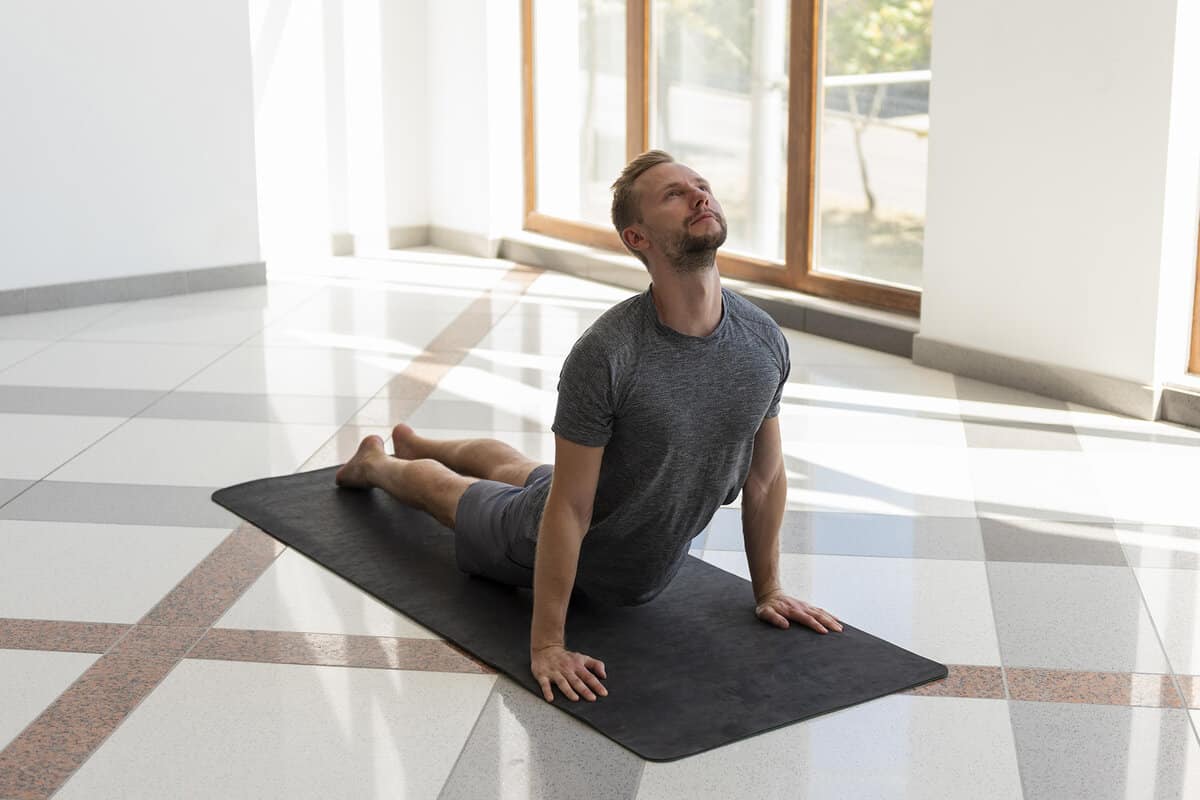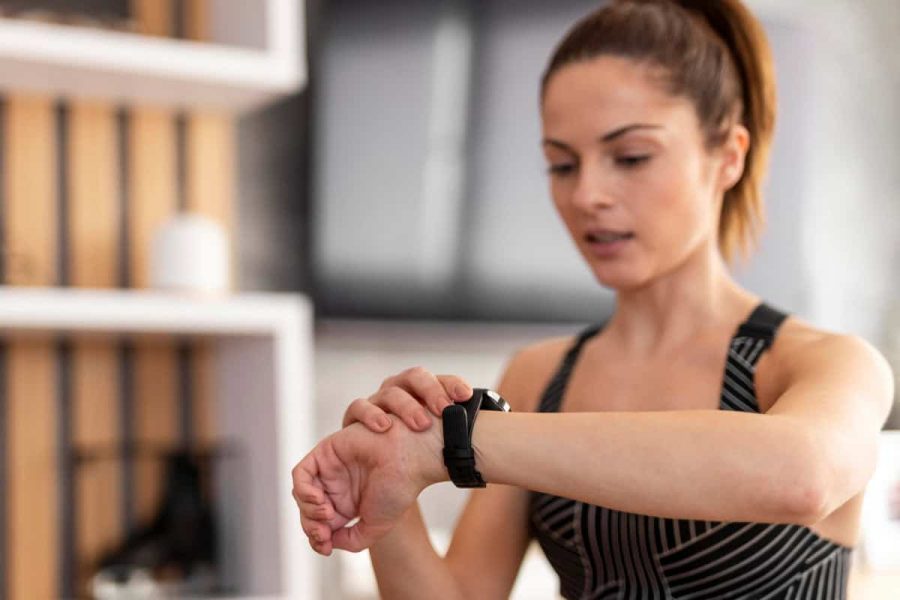Back in Action: Conquering Back Pain with Yoga or Pilates (For Men Too!)

Back pain – a modern-day nemesis that plagues millions. Whether it’s a dull ache or a sharp pang, it can disrupt your daily routine and leave you yearning for relief. But fear not, fellow sufferers! There’s hope beyond pain relievers and restricted movement. Enter the world of yoga and Pilates – powerful tools for back pain management, suitable for everyone, including men. Let’s dispel the myth that these practices are “soft” or feminine. They’re effective strategies for building core strength, improving flexibility, and ultimately, reducing back pain.
KEY TAKEAWAYS:
• Back pain plagues millions, but yoga and Pilates offer powerful, drug-free solutions.
• Both practices target weak core muscles, tight hamstrings, and poor posture – common culprits behind back woes.
• There’s no single “best” option. Choose yoga for flowing movements and meditation, or Pilates for controlled, equipment-based exercises.
• Yoga and Pilates aren’t just for flexibility! They benefit men too, building strength, reducing stress, and preventing injuries.
• Consistency is key! Aim for 2-3 sessions per week for optimal results.
Understanding Back Pain: The Root of the Problem
Weak core muscles, tight hamstrings, and poor posture are common culprits behind back woes (Harvard Health Publishing, 2023). These factors can misalign your spine, putting undue stress on your back muscles and joints. The good news? Yoga and Pilates target these very issues.
Yoga vs. Pilates: Choosing Your Back Pain Warrior
Yoga: This ancient practice combines physical postures (asanas), breathing exercises (pranayama), and meditation. Yoga focuses on building strength, flexibility, and balance, all of which contribute to a healthy back. Specific yoga poses can target tight muscles, improve core engagement, and promote proper spinal alignment (National Institutes of Health, 2022).
Pilates: Developed in the early 20th century, Pilates emphasizes core strengthening and controlled movements. Pilates exercises often utilize specialized equipment like reformers and stability balls, but mat-based Pilates is equally effective. Similar to yoga, Pilates improves core strength, posture, and flexibility, ultimately reducing back pain (Mayo Clinic, 2023).
So, which one reigns supreme?
The truth is, there’s no single “best” option. Both yoga and Pilates offer significant benefits for back pain management. Here’s how to choose:
Consider your preferences: Do you enjoy flowing movements and meditation (yoga) or more controlled, equipment-based exercises (Pilates)?
Listen to your body: Start with a beginner class in both disciplines and see which feels more comfortable and effective for you.
Consult a healthcare professional: If you have pre-existing back conditions, getting guidance from a doctor or physical therapist can help you choose the most suitable practice.
Benefits Beyond Back Pain Relief: Why Men Should Embrace Yoga and Pilates
Here’s a wake-up call for the gents… Yoga and Pilates aren’t just for flexibility enthusiasts. These practices offer a treasure trove of benefits for men, including:
Improved Strength and Muscle Tone: Building core strength is crucial for overall fitness and injury prevention. Yoga and Pilates effectively target core muscles, leading to a stronger, more sculpted physique.
Enhanced Flexibility: Tight muscles can contribute to back pain and movement limitations. Yoga and Pilates stretches improve flexibility, allowing for a wider range of motion and reduced risk of injury.
Stress Reduction: Both practices incorporate elements of
mindfulness and breathwork, proven to reduce stress and improve mental well-being (American Psychological Association, 2020).
Injury Prevention: Strong core muscles and improved
flexibility translate to better support for your spine and joints, reducing the
risk of future back problems.
FAQs: Your Back Pain Battleground Questions Answered
Q: I’m a complete beginner. Can I still do yoga or Pilates?
Absolutely! Most studios offer beginner classes specifically designed for newcomers. There are also plenty of online resources and tutorials tailored for beginners.
Q: How often should I practice yoga or Pilates to see results?
Aim for at least 2-3 sessions per week for optimal results. Consistency is key!
Q: Will yoga or Pilates make me look bulky?
No, these practices focus on building lean muscle and improving flexibility, not bulking you up.
Q: I have a bulging disc in my back. Can I still do yoga or Pilates?
It’s crucial to consult a healthcare professional before starting any new exercise program, especially if you have a pre-existing condition like a bulging disc. They can advise you on whether yoga or Pilates is safe for you and may recommend modifications to avoid further injury.
Q: Can yoga or Pilates help me lose weight?
While not solely focused on weight loss, both yoga and Pilates can contribute to weight management. They can help you burn calories and build muscle, which can boost your metabolism. However, for significant weight loss, a combination of exercise and a healthy diet is recommended.
Q: I don’t have time for long workouts. Are there shorter routines that can still help my back?
Absolutely! Both yoga and Pilates offer shorter routines that can still be effective for back pain management. Look for “gentle yoga for back pain” or “Pilates for lower back pain” videos online. Even 15-20 minutes of practice a few times a week can make a difference.
Q: What if I find a yoga or Pilates class intimidating?
Don’t worry! Most studios have a welcoming atmosphere, and instructors are there to guide you. Remember, everyone starts somewhere, and most classmates are focused on their own practice.
Q: Can I hurt myself doing yoga or Pilates?
Injury is always a possibility with any exercise. However, the risk is minimized by starting with beginner classes, focusing on proper form, and listening to your body. Don’t hesitate to ask the instructor for modifications if you experience any pain.
Q: I’m not very flexible. Will I be able to do yoga or Pilates?
Absolutely! Yoga and Pilates are excellent ways to improve flexibility. Many poses can be adapted for different levels of ability. Focus on your own progress, not comparing yourself to others.
Q: What should I wear to a yoga or Pilates class?
Comfort is key! Wear loose-fitting clothing that allows for freedom of movement. Breathable fabrics are ideal, especially for yoga, which can involve some sweating.
Q: Do I need any special equipment for yoga or Pilates?
For most beginner yoga or mat-based Pilates classes, you won’t need any equipment. Some Pilates studios might utilize specialized equipment like reformers or stability balls, but these can often be modified for mat exercises.
Final Thoughts
Remember, conquering back pain is a journey, not a destination. Embrace yoga or Pilates (or even both!), prioritize proper form, and listen to your body. With consistent practice, you’ll be well on your way to a stronger, pain-free back and a healthier you.
Ready to take charge of your back pain and build a stronger, healthier you? Find a local yoga or Pilates studio offering beginner classes, or explore the abundance of free online resources to get started on your journey. Remember, consistency is key! With dedication and proper form, you can experience the transformative power of yoga or Pilates.



